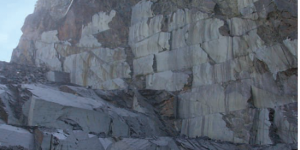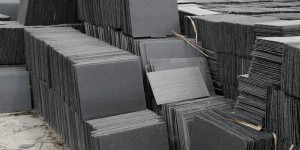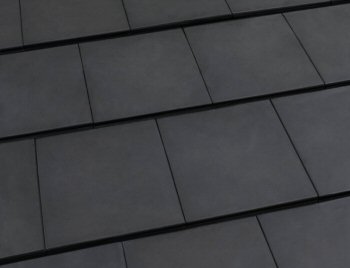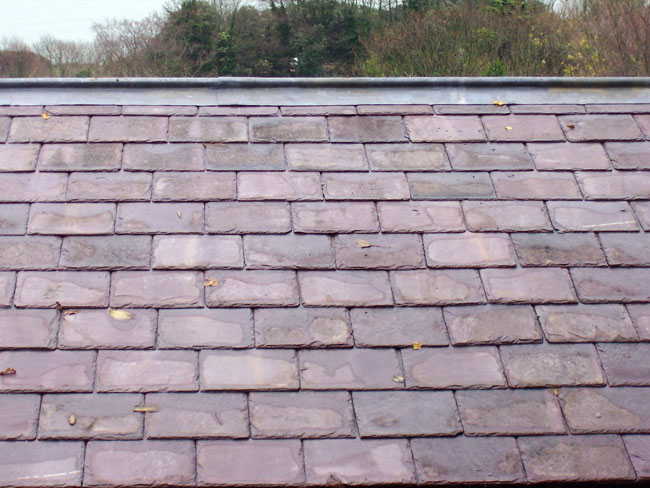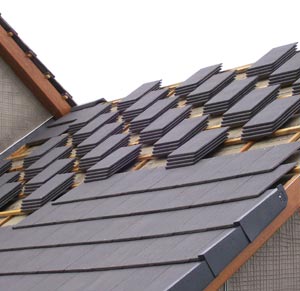Roof Slating
Information Guide by DLE Roofing, Woking, Surrey
Roof Slating Surrey, Woking & Guildford
Slate is a natural material and will vary in quality and selection. Whilst some variation is normal, the slating company needs to be in constant interaction with the quarries to ensure that both selection and quality is consistent.
Natural Slate is sourced from all over the world. Major slate producing countries include Spain, Wales, Brazil, China and Canada.
All natural slates should meet key essential criteria:
- BS EN12326 test results and certification
CE labelling - Consistency and security of supply
- Consistency of quality
Understanding BS eN12326 & Ce Marking
This standard is designed to enable the specifier / purchaser to compare the key physical properties of natural slates to ensure the best fit for the project in mind. A broad range of attributes are tested, but the three most critical areas are Thermal Cycle, Sulphur Dioxide Exposure and Water Absorption. BS EN12326 replaced the previous slate standard, BS 680, in 2004.
This standard is designed to enable the specifier / purchaser to compare the key physical properties of natural slates to ensure the best fit for the project in mind. A broad range of attributes are tested, but the three most critical areas are Thermal Cycle, Sulphur Dioxide Exposure and Water Absorption. BS EN12326 replaced the previous slate standard, BS 680, in 2004.
Thermal Cycle
Essentially, this process assesses the levels of rust or oxidisation within the slate.
The test involves repeatedly soaking six pieces of slate in water and then drying them out over a period of up to three weeks. The samples are then inspected for corrosion.
The results are classified as follows:
T1: No apparent change OR some surface rust OR other colour changes that neither affect the structure, nor form runs of discolouration.
T2: Oxidation or appearance changes of the metallic inclusions with runs of discolouration but without structural changes.
T3: Oxidation or appearance of changes of metallic minerals that penetrate the slate and risk forming holes. SIG Roofing does not supply any T3 slates.
All slates should be independently tested to T1 or T2 standard.
Sulphur Dioxide exposure
This test examines the ability of the slate to resist atmospheric pollutants.
The slate samples are placed in a hermetically sealed container for up to three weeks and subjected to extreme acidic and humid atmospheric conditions.
These samples are then subjected to a standardised mechanical scraping test to measure any softness caused by the chemical disintegration of any carbonate content.
Results are shown as S1 (no change), S2 (the slate must be split at least 5% thicker) or S3 (slates must be at least 8mm). Slates containing more than 20% carbonate content are not suitable for roofing or external cladding.
All slates should be independently tested to S1 standard.
Design Considerations
To ensure the effective design of a natural slate roof, it is imperative that key interrelated factors are taken into account including:
Site exposure
The pitch of the roof
The type of slate selected
The slate lap
General guidance on the most important points to be considered is given below.
Environmental Conditions
Rain Exposure
The degree of exposure of a building to driving rain determines the minimum lap which should be specified.
Localised factors such as high buildings, buildings on the slopes or tops of hills and coastal sites can increase the exposure grading which should be applied in a specific project.
Pitch of Roof
In general, the lower the pitch of the roof, the greater the lap should be.
This longer lap will help to resist both capillary action and wind uplift. On steeper pitches with free-flowing drainage, smaller slates may be used.
For exposed sites, wide slates with a greater lap should be used whereas in sheltered areas, roof pitches as low as 20 degrees can be achieved using a hook fixing system.
Lap
The lap is calculated by taking account of wind uplift, exposure to driving rain and the roof pitch.
The most commonly used slate size in Britain is 500x250mm. Most stock slates will be pre-holed at 75, 90 or 100mm, allowing you the versatility of different pitches – 25 degrees in moderate exposure zones and 30 degrees in severe exposure zones.
Fixing Natural Slates
There are two ways of installing slates; nailing or hook fixing.
These fasteners fix the slates to either batten which is by far the most common English method, or to sarking board, which is commonly used in exposed areas in Scotland.
Nailing – Nail fixing is the traditional UK method of installing slates and requires a degree of skill to produce a professional result.
Most slates are supplied pre-holed. Thinner slates (up to 7mm) are usually punched from the reverse face, creating a small ‘spalled’ area around the hole to allow the head of the nail to sit flush with the face of the slate. Thicker or very hard slates are often drilled.
To comply with BS 5534, nails used for slating must:
Be made from copper or aluminium. Steel (including galvanised steel) is not permitted for reasons of corrosion, and hence safety.
Have a shank (wire) diameter of at least 3mm.
Have a head diameter of at least 10mm.
Be of the correct length to engage into a standard 25 x 50mm batten by 20-22mm.
Appropriate slate stockists carry RoofShop nails made to these specifications, manufactured in the EU, and fully compliant with BS 5534.
Hook Fixing
Hugely popular in continental Europe, hook fixing is quicker and simpler to install than nail fixing.
It provides additional security should a slate crack, as it prevents the loose tail of the slate from falling off the roof. In addition, hook fixing reduces the risk of slate breakage during nailing with conventional pre-holed slates.
To comply with BS 5534, hook fixings must:
Be made from 316-grade (Marine Grade) stainless steel.
Have a spiked end (driven into the batten/sarking board like a nail), not batten end (where the top part of the slate hook wraps around the batten).
There are several grades of stainless steel from which slate hooks have been made.
While 316-grade stainless steel is absolutely essential in corrosive atmosphere (e.g. cities, coastal areas), 304-grade has been safely used in inland rural areas, and can offer a modest cost saving. Lower grades of stainless steel become brittle with time, leading to slate loss and the risk of accidents.
Appropriate slate stockists carry RoofShop 316-grade slate hooks made to these specifications. These are manufactured within the EU and comply fully with BS 5534.
Given the multitude of different sizes and headlaps available, the installation cost of any slate can be influenced by the size selected and the quantity of batten and fixings required for that particular slate size.
Please contact me for more information about this by clicking here.
The most popular slate size in Southern England is 500 x 250mm, and 400 x 250mm in the North of England and Scotland.
There is a huge selection of high-quality slates covering a broad range of colours and textures to fulfil almost any specification desired.
The Specification range is carefully tailored to each part of the UK, and regional favourites are stocked in depth for rapid availability and service.
SIGA Specification slates are a popular choice with homeowners, self-builders and developers, due to their consistency, quality, smooth roof finish, and market-leading warranties. All Specification slates are A1, T1, S1 to comply with NHBC requirements.
Questions or Advice
If you have any questions or would just like some advice, feel free to contact me anytime. Please fill out your details below and I will get back to you as soon as possible.
Or you can call me on 07712 269 441 or send an email: Contact Info
All Rights Reserved | © 2016 DLE Roofing, 56 High Street, Old Woking, Surrey GU22 9LW

